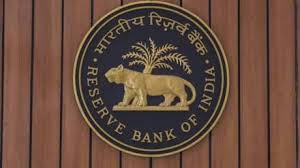
Trump Tariffs & India’s Textile Exports
Donald Trump’s presidency saw a significant shift in US trade policy, marked by the implementation of protectionist measures. These measures, often referred to as “Trump tariffs,” involved imposing substantial tariffs on imported goods from various countries, aiming to protect American industries and jobs. This approach significantly altered the global trade landscape and triggered retaliatory tariffs from other nations, escalating tensions and contributing to a broader trade war.
The rationale behind these tariffs was to boost domestic production by making imported goods more expensive. The Trump administration argued that unfair trade practices, particularly from China, had harmed American businesses. However, the impact of these tariffs extended far beyond the intended targets. Many industries, including those unrelated to the initial targets, felt the ripple effects of these protectionist policies. The complexities of global supply chains meant that businesses across the world experienced disruptions.
These tariffs affected numerous sectors, and the impact varied widely depending on the industry and country. Some sectors benefited from increased domestic demand, while others suffered from reduced exports and higher input costs. The uncertainty created by these fluctuating tariffs also made it difficult for businesses to plan for the future, hindering investment and growth. The long-term consequences of these protectionist measures remain a subject of ongoing debate and economic analysis.
The imposition of these tariffs had a significant impact on US relations with its trading partners. Many countries responded with their own retaliatory tariffs, leading to strained diplomatic relations and disputes within international trade organisations. The resulting trade war created uncertainty and negatively impacted global economic growth. The full extent of the long-term impact of these protectionist policies is still unfolding.
Impact on Indian Textile Exports
The Indian textile industry, a significant exporter globally, felt the full force of the “Trump tariffs.” These tariffs, particularly those targeting textiles and apparel, immediately impacted Indian exports to the US market. Higher duties made Indian textiles less competitive compared to domestically produced goods or those from other countries not subject to the same tariffs.
The impact wasn’t uniform across the Indian textile sector. Some segments, especially those focusing on higher-value products or niche markets, managed to adapt and maintain some level of export volume. However, many smaller businesses, particularly those relying heavily on the US market, struggled to absorb the increased costs and faced significant losses. This led to job losses and reduced production in certain areas.
India responded to the “Trump tariffs” with retaliatory tariffs on US goods, further escalating the trade war and impacting bilateral relations. The uncertainty created by the fluctuating tariffs made it difficult for Indian textile exporters to plan long-term strategies, invest in new technologies, or expand their operations. The industry’s ability to compete in the global market was significantly weakened.
The decrease in Indian textile exports to the US had a cascading effect throughout the supply chain. Farmers supplying raw materials experienced reduced demand, while workers in manufacturing and processing faced job insecurity. The overall economic impact on India, although difficult to isolate completely from other factors, was undeniably negative, highlighting the interconnectedness of global trade and the far-reaching consequences of protectionist policies.
Beyond the direct impact on exports, the “trade war” significantly damaged the long-term relationship between India and the US. The uncertainty and mistrust generated by the tariff battles hindered cooperation on other trade issues and broader diplomatic relations. Restoring trust and rebuilding a stable trade relationship will require considerable effort from both sides.
US-India Trade Relations Under Strain
The imposition of Trump tariffs significantly strained US-India trade relations. The retaliatory tariffs imposed by India in response to the US measures created a cycle of escalating trade tensions, impacting various sectors beyond textiles. This tit-for-tat approach damaged the overall trust and cooperation that are crucial for a healthy bilateral trade relationship.
Beyond the immediate economic consequences, the trade war fostered an atmosphere of uncertainty and unpredictability. Businesses in both countries struggled to plan for the future, fearing further escalations or sudden policy shifts. This uncertainty discouraged investment and hindered long-term growth strategies, impacting both the US and Indian economies.
The impact extended beyond the purely economic sphere. The trade disputes overshadowed other areas of cooperation between the two nations, creating friction in diplomatic relations and hindering progress on other shared goals. The strained relations hampered efforts to address other critical issues, highlighting the interconnectedness of trade and broader political relationships.
The damage to US-India trade relations extends beyond the direct impact of tariffs. The loss of trust and predictability has created a climate of uncertainty that makes it difficult for businesses to invest and grow. Rebuilding the relationship requires a concerted effort from both sides to restore confidence and establish a more stable and predictable trade environment.
While both countries share significant economic and strategic interests, the trade war has introduced significant obstacles. Addressing these challenges and restoring a positive trajectory in US-India trade relations requires a commitment to dialogue, mutual respect, and a willingness to find mutually beneficial solutions. The long-term consequences of the strained relations will depend heavily on the steps taken by both governments to repair the damage.
















